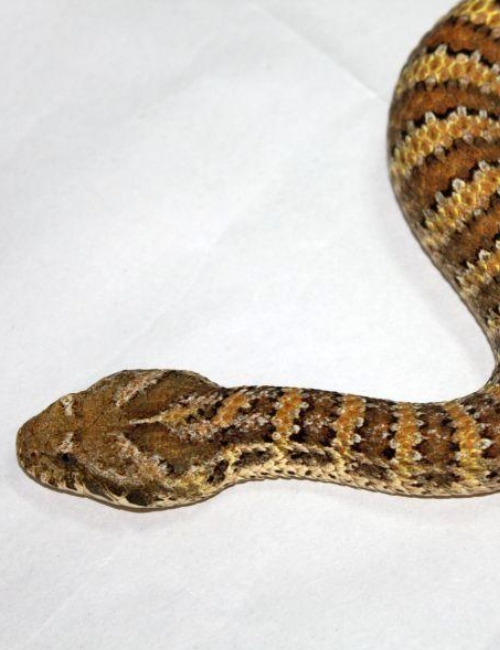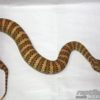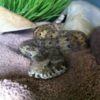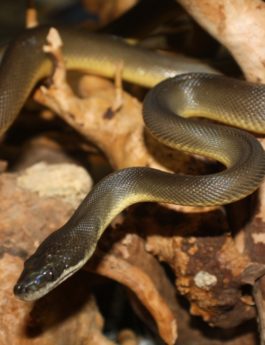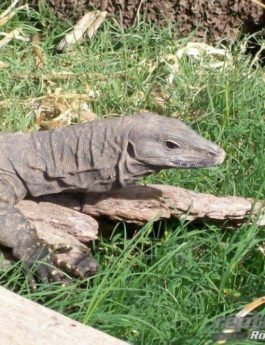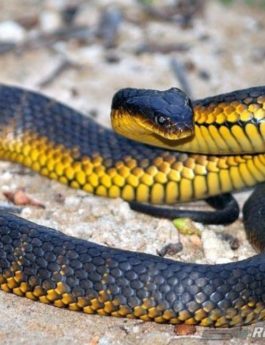Relatively slender death adder with strongly-keeled dorsal scales and very rugose head shields. Ground colour pale reddish-brown to rich red, marked with transversely-aligned dark flecks, alternating with 50-70 narrow cream to yellow bands. These are composed of pale pigment on base of each scale. Pale pigment on labial scales may occasionally form obscure bars. Segmented tail-tip cream, yellow or black. Midbody scales in 19-21 (rarely 17) rows. Ventral surfaces whitish. TL 0.75m. Distinguished from A. antarcticus and A. praelongus in possessing strongly-keeled dorsal scales (vs smooth to weakly-keeled, respectively), slender build (vs very robust to moderately robust, respectively), and fewer midbody scale rows (19-21, rarely 17 vs 21-23).
Shelters beneath rock slabs, hummock grasses and in abandoned burrows. Arid regions through western Qld., southern N.T., and far north-east and north-west of S.A., to north-west coast of W.A. Favours hummock grasslands on sand ridges, sandy or stony flats, and rock outcrops.
Terrarium: Death Adders do not require an enclosure with very much height, however if given the correct environment with climbing enrichment they will explore their enclosure. The enclosure needs to be large enough to provide multiple hide rocks and maintain a thermal gradient, a terrarium that is 60x45x45cm (WxDxH) would be suitable to house a mature Death Adder. Terrarium’s must be lockable and escape proof.
Lighting & heating: UVB lighting is not essential to Death Adders, however a low 2.0 spectrum fluorescent globe can be used for viewing purposes. Heating can be provided with a heat tile, mat or cord to maintain a ground surface temperature of 32°C in the hot spot. Ambient heat can be provided with an infrared heat globe to maintain a daytime temperature of 36°C in the warm end and 25°C in the cool end, on warmer days you may not need to turn on the heat globe as the ambient temperature of the enclosure may already be high enough. A thermometer should always be used to monitor the temperature within the enclosure.
Furnishings: It is important to provide your Death Adder with a hide cave in the warm end, a water bowl at the cool end, and artificial plants will give coverage and decoration. Large Logs and vines can be used within the enclosure to provide climbing enrichment. A pet bedding wood chips such as Chipsi or Critter Crumble can be used as a substrate. It is important to keep the enclosure basic and easy to maintain, as a cluttered terrarium can make it very dangerous when you need to remove your venomous snake from the enclosure for any reason.
Food in captivity: All snakes in captivity must be fed dead food. A Death Adder will eat a variety of frozen and thawed mice, rats and chickens of appropriate sizes. On average they will have 1-2 food items every 7-10 days.
The essentials:
- Terrarium of appropriate size
- Tummy heating
- Thermometer
- Infrared Heat globe
- Water bowl
- Substrate
- Hide cave

